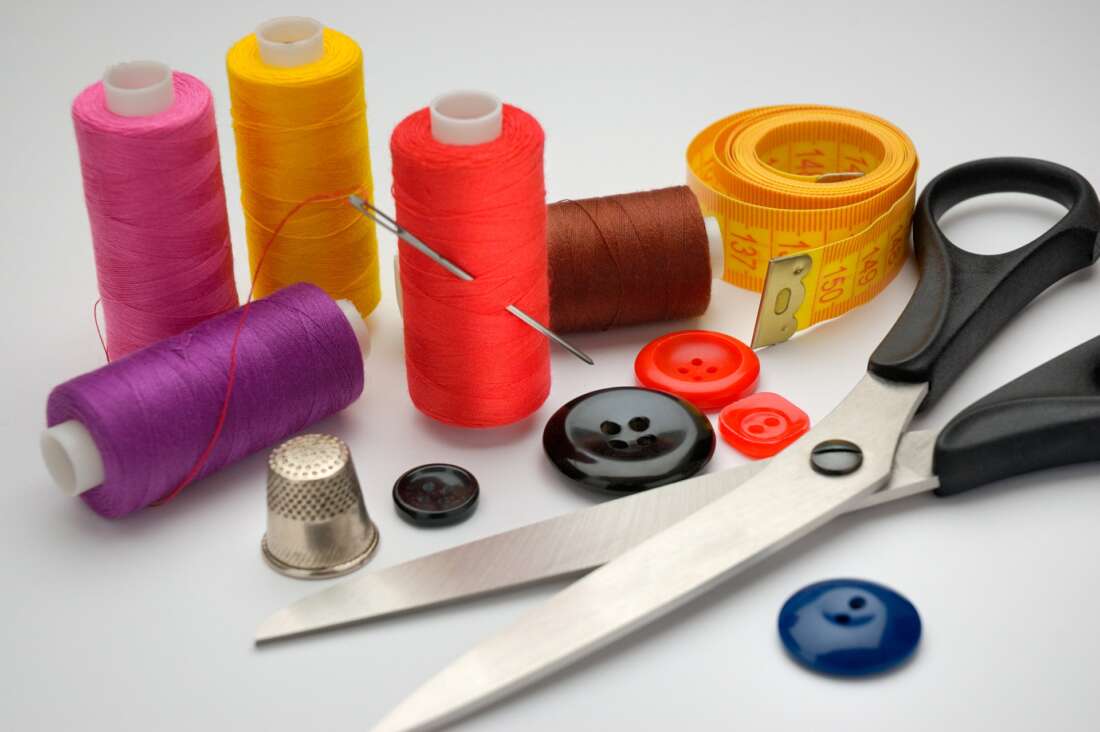 Are you someone who dreams of making their own clothes? Are you tired of spending money every time your favorite clothes need fixing? Maybe it’s time for a new skill set that is also an enjoyable hobby!
Are you someone who dreams of making their own clothes? Are you tired of spending money every time your favorite clothes need fixing? Maybe it’s time for a new skill set that is also an enjoyable hobby!
There are various reasons why you should learn how to sew. Not only does it give you a sense of accomplishment but it’s eco-friendly and you’ll save money by being your own tailor. While it may seem daunting to learn a new skill, all you need is the right tools.
Sewing for beginners shouldn’t be stressful, it should be a fun experience that gets easier as you go. If you’re ready to learn more, read on.
Sewing Machines
The first thing you’ll want to know is the different tools for the job. You’re already familiar with sewing machines but did you know that there multiple types of sewing machines? You have everything from embroidery machines to handheld sewing machines.
If you’re searching for the right sewing machine, it’s tricky to know where to start. There are a lot of factors to consider when you decide what is best for you.
To help narrow it down, let’s look at some things to keep in mind.
Budget
How much money are you willing to spend on your new sewing machine? Basic machines can start at $90 while more high-end models can go over $2,000. If you’re just starting, don’t splurge, get something in a decent price range that is good quality.
As your skills improve, you can decide when it’s time for an upgrade.
Simplicity
Think of the types of projects you’ll be doing. If they require intricate embroidery and fancy tech, you’ll a sewing machine with all the bells and whistles. If you’re looking to create easy clothing and make minor fixes, you’ll want a more basic machine.
Mechanical machines tend to be easier to use and require a lot less maintenance. Computerized machines will create a perfect stitch nearly every time and have strong motors for any heavy-duty projects.
Local vs Online
It’s great to form a relationship with your local dealer. Not only will they listen to what you’re looking for in a sewing machine but they can help find the best option for you. Before heading to a local place, be sure to do some research on different sewing machine manufacturers.
Buying online is a great option as well. Many sewing machine sellers tend to have free online lessons if you purchase a machine.
Now that you know where to start when it comes to purchasing a sewing machine, it’s time to learn how to sew!
How to Sew
The first thing you’ll need are essential supplies. This includes things like scissors, thread, fabric, pins, and bobbins. This is the very basic list, you’re likely to buy more of what you need as you improve.
You’ll also need to understand how your sewing machine works. After all, it is an entirely new type of technology you’re using. The best way to learn about your machine is to read the user manual but you can also check online videos for help.
Take time to sit down and go through everything: how to change settings, how to thread it, and what all the little buttons mean.
Getting Started
You’re sitting in front of your sewing machine, all the supplies are in front of you, you’re ready – now what? Well, you’ll need something to sew! If you’re learning to sew, there are so many options for beginners.
Either take the time to teach yourself how to sew by starting with easy projects and working your way up or go to live lessons where you can have an instructor teaching you how to make something, step by step. Feel free to combine the two! Regardless of how you begin, remember to be easy on yourself if it’s not right the first time.
As you continue to improve sewing basic items, you can begin to slowly work your way towards more difficult projects.
Hand Sewing for Beginners
If you’re not quite ready for a sewing machine, maybe you’re interested in hand sewing. While you won’t be able to make too many complex things, it’s great to know how to hand sew for small projects or any repairs. All you need is needles, thread, and scissors!
This is a breakdown of how to hand sew as a beginner:
- Get your thread and begin unraveling it from the spool, make sure it’s a decent length and cut it with your scissors.
- Take the thread and weave it through the loop at the end of the sewing needle, weave it until it’s halfway through and fold the thread in half.
- Tie the end of the thread, at least 2-3 times, and push the needle through the fabric you want to sew.
- Take the needle and push it back through the fabric near the original spot you just went through, make sure you pull all the way.
- Continue sewing, it should be a back and forth motion, when you get to the end tie a knot 2-3 times.
- Use scissors to do the final cut of the thread, be sure to give a tiny bit of space at the end.
-and that’s it! Obviously, some of the steps will differ depending on your project or as you get accustomed to sewing but this a great life skill to know. Next time you lose a button on your favorite jacket, you’ll be able to get it fixed up in no time.
Time to Learn How to Sew
Nothing beats creating something with your own hands, it’s a special kind of accomplishment. Doesn’t matter if it’s baking a loaf of bread from scratch or creating a handmade shirt as a gift.
Sewing is one of those skillsets that has so many benefits. You’ll be able to make your own clothes, fix older clothes, and feel accomplished. With these sewing tips, you’ll learn how to sew in no time!
If you found this useful, check out the home/DIY section of our blog for similar articles!

